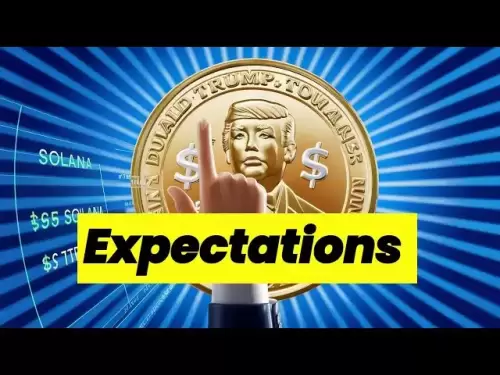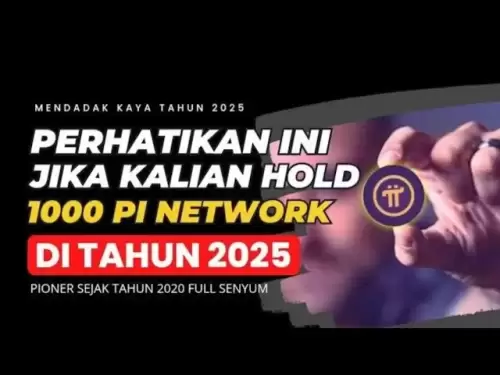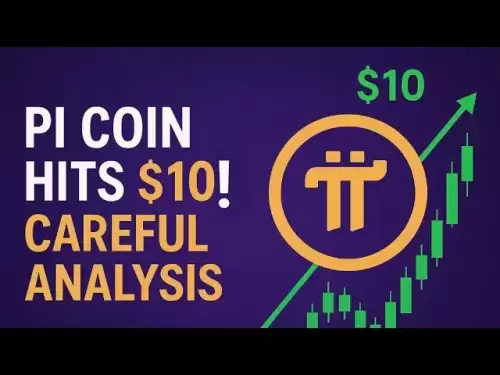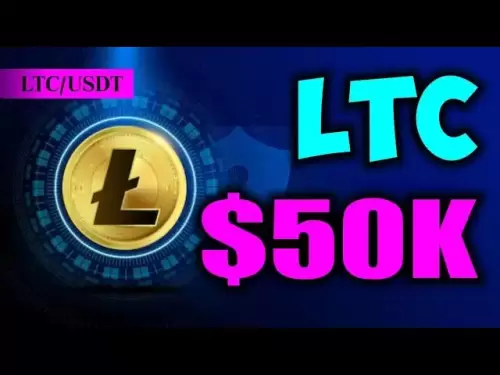-
 Bitcoin
Bitcoin $118300
0.21% -
 Ethereum
Ethereum $3748
5.28% -
 XRP
XRP $3.514
2.29% -
 Tether USDt
Tether USDt $1.000
-0.01% -
 BNB
BNB $747.8
2.18% -
 Solana
Solana $181.1
2.16% -
 USDC
USDC $0.9999
0.00% -
 Dogecoin
Dogecoin $0.2642
9.21% -
 Cardano
Cardano $0.8606
3.96% -
 TRON
TRON $0.3173
-0.98% -
 Hyperliquid
Hyperliquid $46.70
4.60% -
 Stellar
Stellar $0.4730
1.76% -
 Sui
Sui $3.926
3.48% -
 Chainlink
Chainlink $19.27
5.24% -
 Hedera
Hedera $0.2780
4.02% -
 Bitcoin Cash
Bitcoin Cash $549.4
8.37% -
 Avalanche
Avalanche $25.06
3.31% -
 Shiba Inu
Shiba Inu $0.00001538
4.36% -
 Litecoin
Litecoin $117.0
12.63% -
 UNUS SED LEO
UNUS SED LEO $8.998
0.08% -
 Toncoin
Toncoin $3.279
3.00% -
 Polkadot
Polkadot $4.490
4.46% -
 Uniswap
Uniswap $10.62
5.37% -
 Ethena USDe
Ethena USDe $1.001
-0.01% -
 Monero
Monero $326.5
0.32% -
 Pepe
Pepe $0.00001417
8.12% -
 Bitget Token
Bitget Token $4.984
2.01% -
 Dai
Dai $0.9999
-0.01% -
 Aave
Aave $326.3
3.09% -
 Bittensor
Bittensor $427.7
3.65%
What are Real-World Assets (RWA) in DeFi?
Tokenized real-world assets like real estate and commodities are transforming DeFi by enabling fractional ownership, collateralization, and new yield opportunities.
Jul 20, 2025 at 08:57 am

Understanding Real-World Assets (RWA) in DeFi
Real-World Assets (RWA) in the context of DeFi refer to tangible or traditional financial assets that exist outside of blockchain ecosystems but are tokenized and integrated into decentralized finance protocols. These assets include real estate, commodities, stocks, bonds, and even intellectual property. The core idea behind RWA in DeFi is to bridge the gap between traditional finance and blockchain-based financial systems, enabling greater liquidity, accessibility, and transparency.
The integration of RWA into DeFi opens up new avenues for yield generation, collateralization, and investment opportunities. By tokenizing real-world assets, these can be fractionalized and made available to a global pool of investors, breaking down geographical and institutional barriers.
How Real-World Assets Are Tokenized
The process of integrating RWA into DeFi begins with tokenization — converting physical or traditional assets into digital tokens on a blockchain. This involves several critical steps:
- Asset Valuation and Legal Structuring: Before tokenization, the asset must be legally verified and appropriately valued. Legal frameworks are established to ensure compliance with relevant financial regulations.
- Smart Contract Deployment: A smart contract is created to represent the ownership and transferability of the asset. These contracts are often built on Ethereum, Polygon, or other EVM-compatible blockchains.
- Issuance of Tokens: Once the asset is verified and the contract is deployed, tokens representing fractional or full ownership of the asset are minted and distributed.
- Integration with DeFi Protocols: These tokens can then be used as collateral, liquidity, or staking assets within DeFi platforms such as Aave, Compound, or MakerDAO.
This process ensures that RWA-backed tokens maintain a verifiable link to their real-world counterparts while enabling seamless participation in decentralized finance.
Use Cases of RWA in DeFi Protocols
The inclusion of RWA in DeFi has unlocked several practical applications across the ecosystem:
- Collateral for Loans: Real-world asset-backed tokens can be used as collateral for borrowing stablecoins or other crypto assets within DeFi lending protocols. This reduces reliance on volatile crypto-native assets.
- Yield Generation: Investors can earn yield by supplying RWA-backed tokens to liquidity pools, earning interest or fees in return.
- Fractional Ownership: Tokenization allows for fractional ownership of high-value assets such as real estate or fine art, making them accessible to retail investors.
- Stablecoin Backing: Some stablecoins are now exploring RWA-backed reserves to diversify their collateral beyond fiat or crypto assets.
These use cases demonstrate how RWA integration enhances DeFi’s utility, bringing in real economic value and expanding the scope of decentralized financial services.
Challenges and Risks Involved in RWA Integration
Despite its promising potential, integrating RWA into DeFi comes with several challenges:
- Regulatory Compliance: Real-world assets are subject to traditional financial regulations. Ensuring compliance with KYC/AML laws and asset-specific regulations is a complex task.
- Oracle Reliability: Accurate and tamper-proof data feeds are necessary to reflect the real-world value of tokenized assets on-chain. Oracles play a crucial role in maintaining this integrity.
- Custody and Legal Enforcement: The legal ownership and enforcement of rights over tokenized RWA require robust legal frameworks and custodial solutions.
- Liquidity Constraints: Unlike native crypto assets, some RWA-backed tokens may face liquidity challenges due to their long-term nature or limited market participation.
These risks highlight the need for robust infrastructure, regulatory clarity, and technological innovation to ensure the safe and effective integration of RWA into DeFi.
Platforms and Projects Leveraging RWA in DeFi
Several platforms and protocols are pioneering the integration of RWA into DeFi, each with unique approaches:
- Centrifuge: This platform allows users to tokenize real-world assets like invoices or real estate and use them as collateral for issuing stablecoins or borrowing crypto.
- Maple Finance: A decentralized lending protocol that enables institutional-grade loans backed by real-world assets, accessible via tokenized pools.
- MakerDAO: The team behind DAI stablecoin has explored integrating RWA-backed vaults to diversify the collateral backing the stablecoin.
- Goldfinch: A decentralized credit protocol that allows unsecured lending to real-world borrowers, with tokenized risk exposure available to DeFi participants.
These projects demonstrate how RWA integration is already shaping the DeFi landscape, offering real economic value and expanding the reach of decentralized finance.
How to Participate in RWA-Based DeFi Opportunities
For users interested in engaging with RWA-based DeFi protocols, here’s a step-by-step guide:
- Research and Identify RWA Protocols: Explore platforms like Centrifuge, Maple, or MakerDAO that offer RWA-backed financial products.
- Connect a Compatible Wallet: Use wallets like MetaMask or Trust Wallet to interact with these platforms.
- Review Tokenized Asset Offerings: Examine the type of RWA being offered, including its valuation, risk profile, and yield potential.
- Provide Collateral or Liquidity: Depending on the platform, you may supply RWA-backed tokens as collateral or contribute to liquidity pools.
- Monitor and Manage Exposure: Track the performance of your RWA investments and adjust positions based on market conditions or risk appetite.
By following these steps, users can safely and effectively participate in the growing RWA DeFi ecosystem.
Frequently Asked Questions (FAQ)
Q: Can real-world assets be fully decentralized in DeFi?
While the tokenization process is decentralized, the underlying real-world assets often require centralized custodians or legal frameworks. True decentralization depends on the structure of the tokenization process and regulatory compliance.
Q: How are RWA-backed tokens priced on-chain?
Pricing is typically determined by off-chain valuations and on-chain oracle feeds. Platforms may use oracles like Chainlink to provide real-time pricing data for RWA-backed tokens.
Q: Are RWA-backed DeFi investments safer than crypto-native assets?
They can offer lower volatility and tangible backing, but they come with their own risks such as regulatory uncertainty, custody issues, and limited liquidity.
Q: What role do smart contracts play in RWA tokenization?
Smart contracts automate the issuance, transfer, and management of tokenized assets, ensuring transparency and programmability. They also facilitate collateralization and yield distribution within DeFi protocols.
Disclaimer:info@kdj.com
The information provided is not trading advice. kdj.com does not assume any responsibility for any investments made based on the information provided in this article. Cryptocurrencies are highly volatile and it is highly recommended that you invest with caution after thorough research!
If you believe that the content used on this website infringes your copyright, please contact us immediately (info@kdj.com) and we will delete it promptly.
- Iron Maiden: Music Legends Celebrate 50 Years with Royal Mint Coin
- 2025-07-21 00:30:13
- BlockDAG, TIA, LTC: Unveiling the Latest Crypto Buzz
- 2025-07-21 00:50:12
- Ethereum Layer-2 Meme Coins: Little Pepe's Big Leap?
- 2025-07-21 00:30:13
- MoonBull, Crypto, and BOME Gains: Riding the Meme Coin Wave to 100x?
- 2025-07-21 00:50:12
- Bitcoin, ETH, and the Trader Target: Decoding the Crypto Landscape
- 2025-07-21 01:10:14
- Solana's TVL Growth: Riding the Cryptocurrency Wave
- 2025-07-21 01:10:14
Related knowledge

What is the difference between a sidechain and a Layer 2?
Jul 20,2025 at 11:35pm
Understanding the Concept of SidechainsA sidechain is a separate blockchain that runs parallel to the main blockchain, typically the mainnet of a cryp...

What is the Inter-Blockchain Communication Protocol (IBC)?
Jul 19,2025 at 10:43am
Understanding the Inter-Blockchain Communication Protocol (IBC)The Inter-Blockchain Communication Protocol (IBC) is a cross-chain communication protoc...

How does sharding improve scalability?
Jul 20,2025 at 01:21am
Understanding Sharding in BlockchainSharding is a database partitioning technique that is increasingly being adopted in blockchain technology to enhan...

What is the "crypto trilemma" of scalability, security, and decentralization?
Jul 19,2025 at 06:28pm
Understanding the Concept of the Crypto TrilemmaThe crypto trilemma refers to the challenge of simultaneously achieving scalability, security, and dec...

What is a cliff and vesting schedule in tokenomics?
Jul 20,2025 at 10:28am
What Does a Cliff Mean in Tokenomics?In tokenomics, a cliff refers to a specific period during which token holders are not allowed to access or transf...
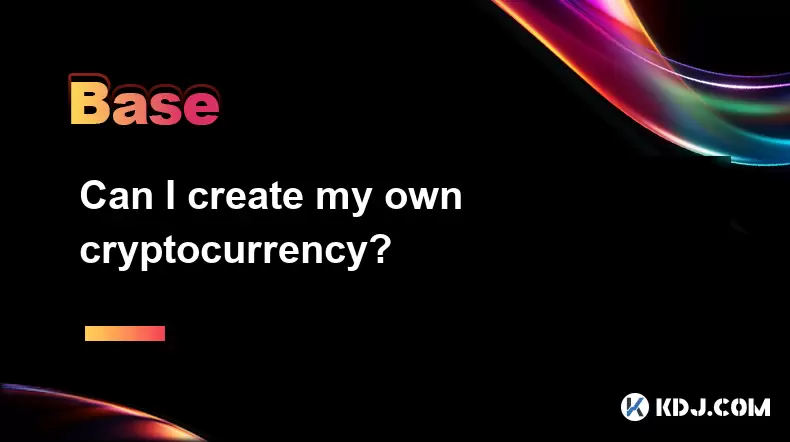
Can I create my own cryptocurrency?
Jul 20,2025 at 11:49pm
Understanding the Basics of Creating a CryptocurrencyYes, you can create your own cryptocurrency, but it involves a combination of technical knowledge...

What is the difference between a sidechain and a Layer 2?
Jul 20,2025 at 11:35pm
Understanding the Concept of SidechainsA sidechain is a separate blockchain that runs parallel to the main blockchain, typically the mainnet of a cryp...

What is the Inter-Blockchain Communication Protocol (IBC)?
Jul 19,2025 at 10:43am
Understanding the Inter-Blockchain Communication Protocol (IBC)The Inter-Blockchain Communication Protocol (IBC) is a cross-chain communication protoc...

How does sharding improve scalability?
Jul 20,2025 at 01:21am
Understanding Sharding in BlockchainSharding is a database partitioning technique that is increasingly being adopted in blockchain technology to enhan...

What is the "crypto trilemma" of scalability, security, and decentralization?
Jul 19,2025 at 06:28pm
Understanding the Concept of the Crypto TrilemmaThe crypto trilemma refers to the challenge of simultaneously achieving scalability, security, and dec...

What is a cliff and vesting schedule in tokenomics?
Jul 20,2025 at 10:28am
What Does a Cliff Mean in Tokenomics?In tokenomics, a cliff refers to a specific period during which token holders are not allowed to access or transf...

Can I create my own cryptocurrency?
Jul 20,2025 at 11:49pm
Understanding the Basics of Creating a CryptocurrencyYes, you can create your own cryptocurrency, but it involves a combination of technical knowledge...
See all articles





















